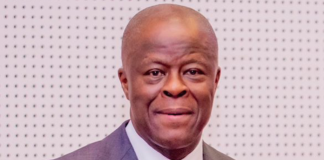The Central Bank of Nigeria, CBN, and Securities and Exchange Commission, SEC, have concluded the share allotment and capital clearance review of the N50 billion rights issue of Union Bank of Nigeria.
The lender said in a statement in Lagos that the share allotment and capital clearance review by the regulators was concluded in December 2017.
It said that the rights issue, which closed on Oct. 30, 2017, recorded 120 per cent subscription.
The statement quoted Mr Emeka Emuwa, the bank’s Chief Executive Officer, as saying that the support of its shareholders had been critical to the rebuilding and transformation of the bank in the past five years.
Emuwa said that the 20 per cent oversubscription of the rights issue demonstrated shareholders’ high level of confidence and support for the bank’s short to medium term strategic priorities.
He said that the bank would accelerate the pace of doing business in 2018 having successfully raised the required capital.
Emuwa said that the bank would commence deployment of the fresh capital across identified business areas to increase capacity to serve customers better.
“Having successfully raised the required capital, we will accelerate the pace of doing business in 2018 as we begin to deploy this fresh capital across identified business areas which will increase our capacity to serve customers better, while also delivering returns to our investors in the short to medium term.
“The new capital will also ensure that the bank maintains a strong buffer above regulatory capital adequacy requirements as it drives towards its vision to be Nigeria’s most trusted and reliable banking partner,’’ he said.
Union Bank launched the N49.7 billion rights issue on Sept. 20, 2017 to shareholders at the ratio of five new ordinary shares for every seven previously held as at Aug. 21, 2017.
The rights issue prospectus showed that 80 per cent of the offer proceeds would be used as working capital, 12 per cent to be invested in technology, innovation and digitalisation, NAN reports.
The offer document also showed that the remaining eight per cent of the proceeds would be invested in customer touch points.












